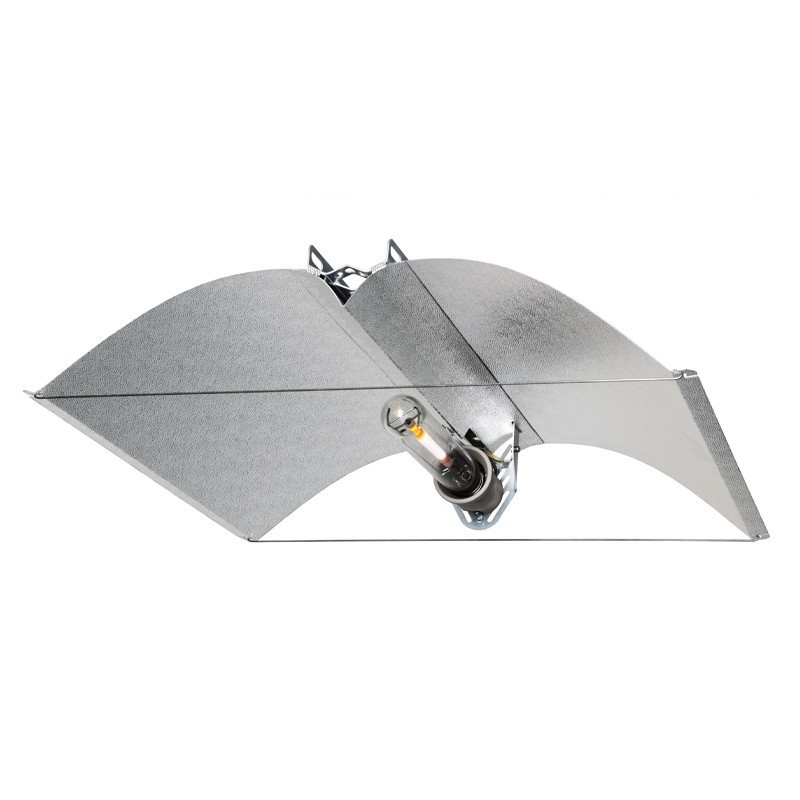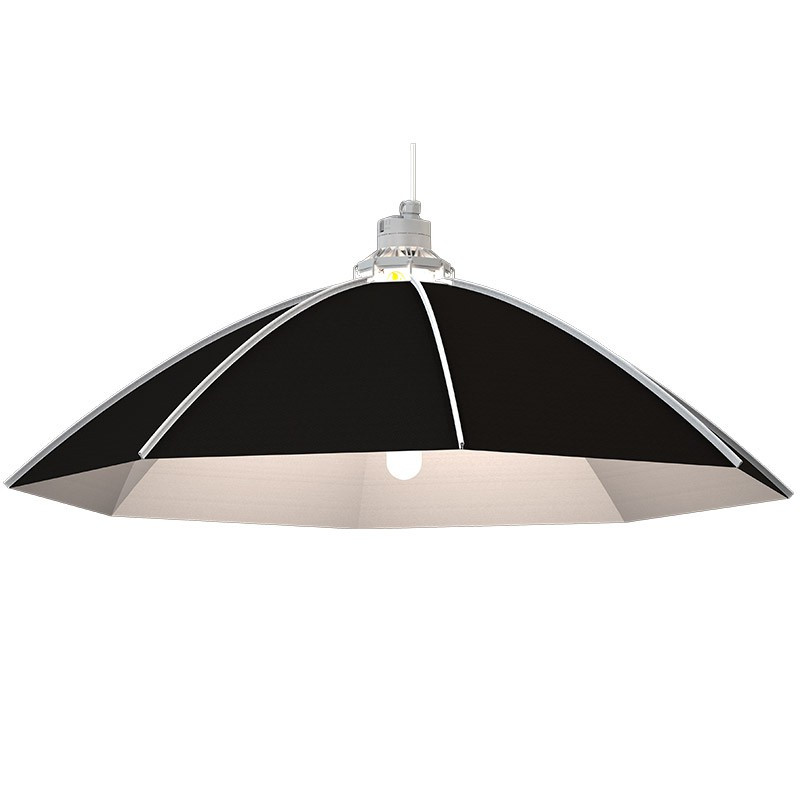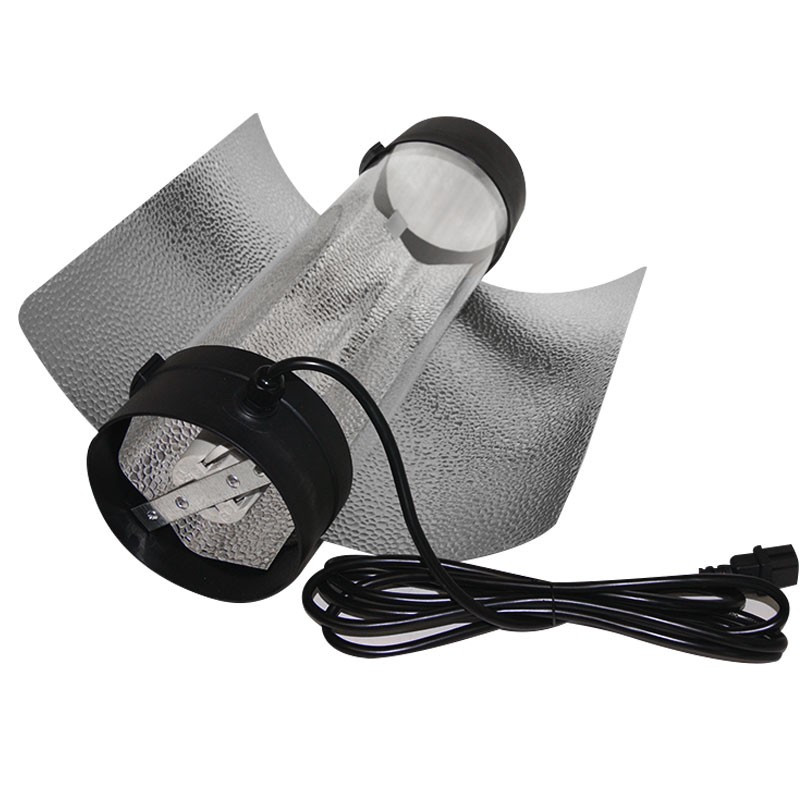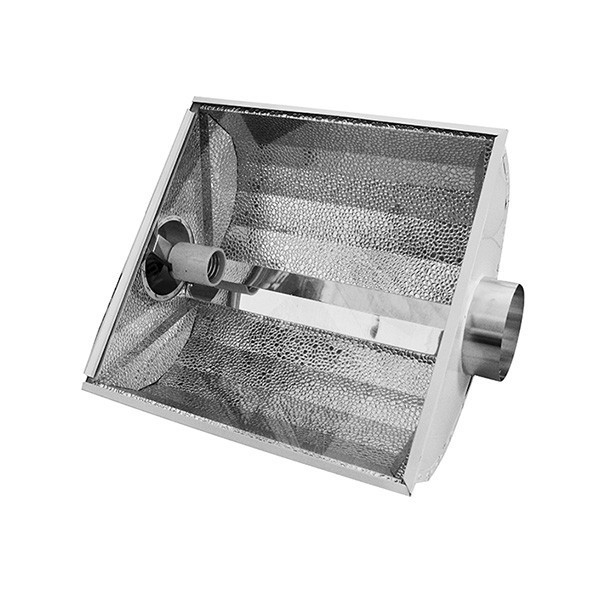To make the most of the light emitted by the bulb, it's essential to use a reflectorhttps://www.indoordiscount.com/fr/29-ampoule-hps. Its role is to concentrate the light emitted by the bulb in the direction of your plants.
The reflector will also distribute the light over the whole of your crop.
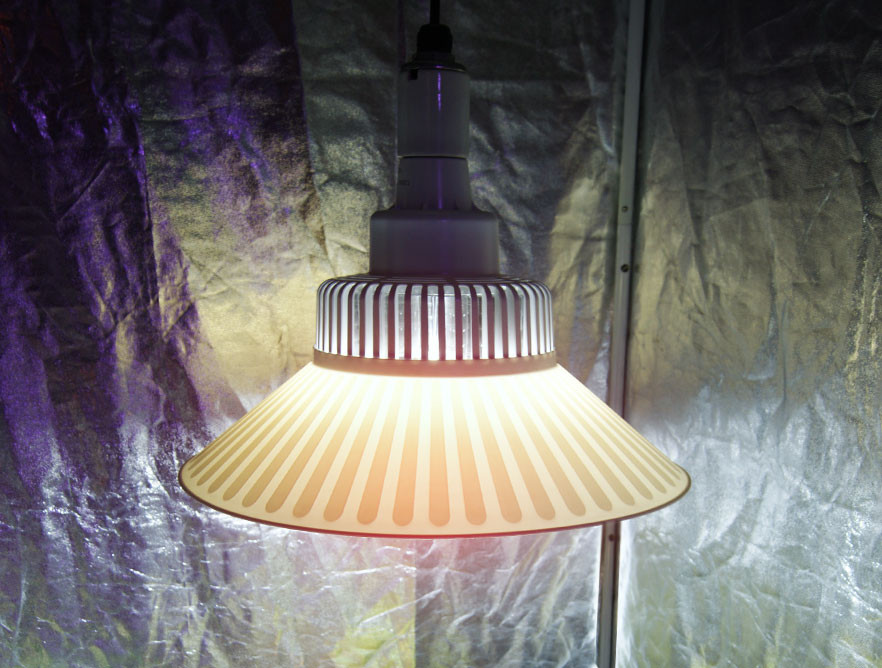
How to choose your reflector?
There are different types of reflector to choose from, depending on your growing space, budget,bulb and needs.
They can be divided into two distinct families: open and closed reflectors.
It's advisable to invest in a quality reflector if you want to achieve a good crop and yield. But when you're new to indoor cultivation, it's not always easy to know what to choose when faced with so many choices.
We'll try to explain the differences to help you make your choice.
First of all, in order to diffuse light more effectively and evenly, it's advisable to choose a reflector with a hammered coating, if you're using an HPS or MHbulbs, as a smooth coating will create hot spots. On the other hand, if you're using CFL bulbs, a smooth coating may be more suitable, as CFLs give off very little heat.
It's also essential that your growing area is lined with a reflective coating such as Mylar or Orca to optimize light reflection and minimize light loss.
Hammered coating Smooth coating


Open reflector:
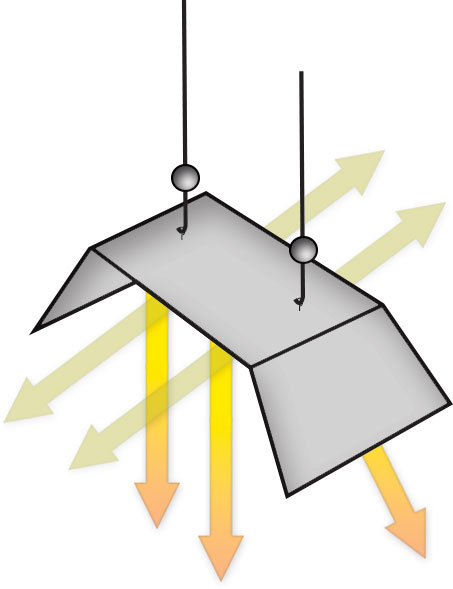 | This type of reflector is generally much more affordable than a closed reflector. As a general rule, open reflectors are lightweight, practical and easy to install, which is why many newcomers to indoor cultivation choose this less expensive alternative. However, they are open at the sides, so light escapes and cannot be absorbed by your plants. On the other hand, the fact that the reflector is open means that your plants can directly absorb the light emitted by the bulb. |
Advantages of an open reflector:
Generally affordable
No loss of lumens
Simple to install
Easier bulb replacement
Lightweight and practical
Closed reflector:
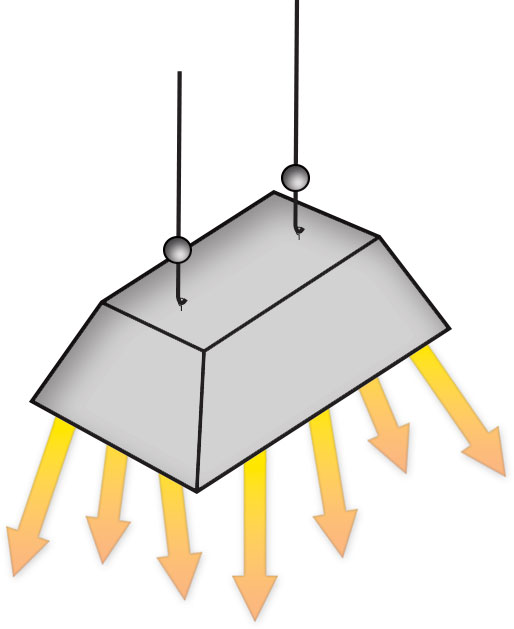 | If you're having trouble regulating the temperature of your grow room because your lamp is emitting too much heat, then the closed reflector is probably the solution for you. In fact, closed reflectors are hermetically sealed with glass to reduce the heat emitted by the lamp into your grow room. This type of reflector requires a loss of light intensity due to the glass, but this loss is compensated for by the fact that a closed reflector can be brought close to your plants, without the risk of burning them. Also, they are generally equipped with openings on the sides to place a sheath and extract the heat emitted by the lamp. |
Advantages of a closed reflector:
Diffuses and emits less heat into your grow room
Can be brought close to your plants without risk of burning them
Uniform light distribution
Safe appearance thanks to the glass
Easy cleaning (glass needs to be cleaned once a month)
Understand luminous flux and air flow within a closed reflector:

Understand light distribution:
There are a huge number of reflectors, each with a very specific shape.
The shape and coating used determine the light distribution.
The diagrams below will help you to understand the light distribution, here in lumens, according to different types of reflector:
Light distribution with open reflectors:



Light distribution with closed reflectors:



Good to know:
- The closer the reflector is to the bulb, the more efficient it is.
- The larger the growing area, the wider the reflector needs to be.
- Adjustable reflectors are available to suit different crop sizes.
- Growing areas larger than 2m2 require two bulbs. There are reflectors for one bulb, but also for two bulbs, to provide more light in a large space.
- In a large space, the use of a reflector on a movable rail is recommended to even out light distribution over the whole of your crop, and thus avoid hot spots.
- Make sure the reflector you choose is compatible with the bulb you're using: not all bulbs will fit all reflectors
Make Hydroponics rhyme with Savings, thanks to Indoor Discount !

